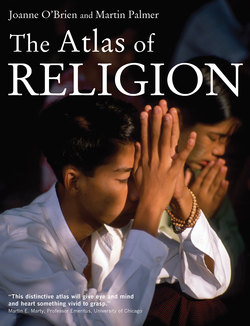Читать книгу The Atlas of Religion - Joanne O'Brien - Страница 46
На сайте Литреса книга снята с продажи.
ОглавлениеThe separation between Church and State only emerged in the late 18th century, as a result of the American Revolution. Many people had fled or migrated to America to escape coercion into a religion that was not theirs, and the idea of a State Church was anathema. Since then, a state independent of, and unaffiliated to, any particular religion has become the norm. Countries that emerged from colonialism during the 20th century have largely opted to be secular states. Within the Muslim world, however, such a divide between religion and State is almost unknown. Islam is a way of life that encompasses legal systems and administration, as well as prayer, instruction and morality. Islam is also recovering ground previously lost to secularism. For example, Iran and Afghanistan have both turned their backs on secular philosophies and reverted to Islamic states. Europe is in a state of transition. Northern Europe tends to be Lutheran or Anglican – traditions that helped create the notion of a distinct nation during the Reformation of the 16th century – but in recent years the Church–State partnership has weakened, exemplified by Sweden, which disestablished its Church in 2000. Southern Europe is Catholic; the Catholic Church held on to these areas in the face of the rise of the Protestant threat. It is the Holy See that negotiates the Church–State relationships in these countries, as with all majority Catholic
countries, leading to a very different relationship from that between Protestants and the State. Elsewhere in the world, religious ties are once again being developed or proposed. In India, one of the major parties overtly campaigns for Hinduism to be the state religion. In Burma and Sri Lanka, Buddhism is used as a rallying point for nationalism in the struggle between the majority culture and minorities.
